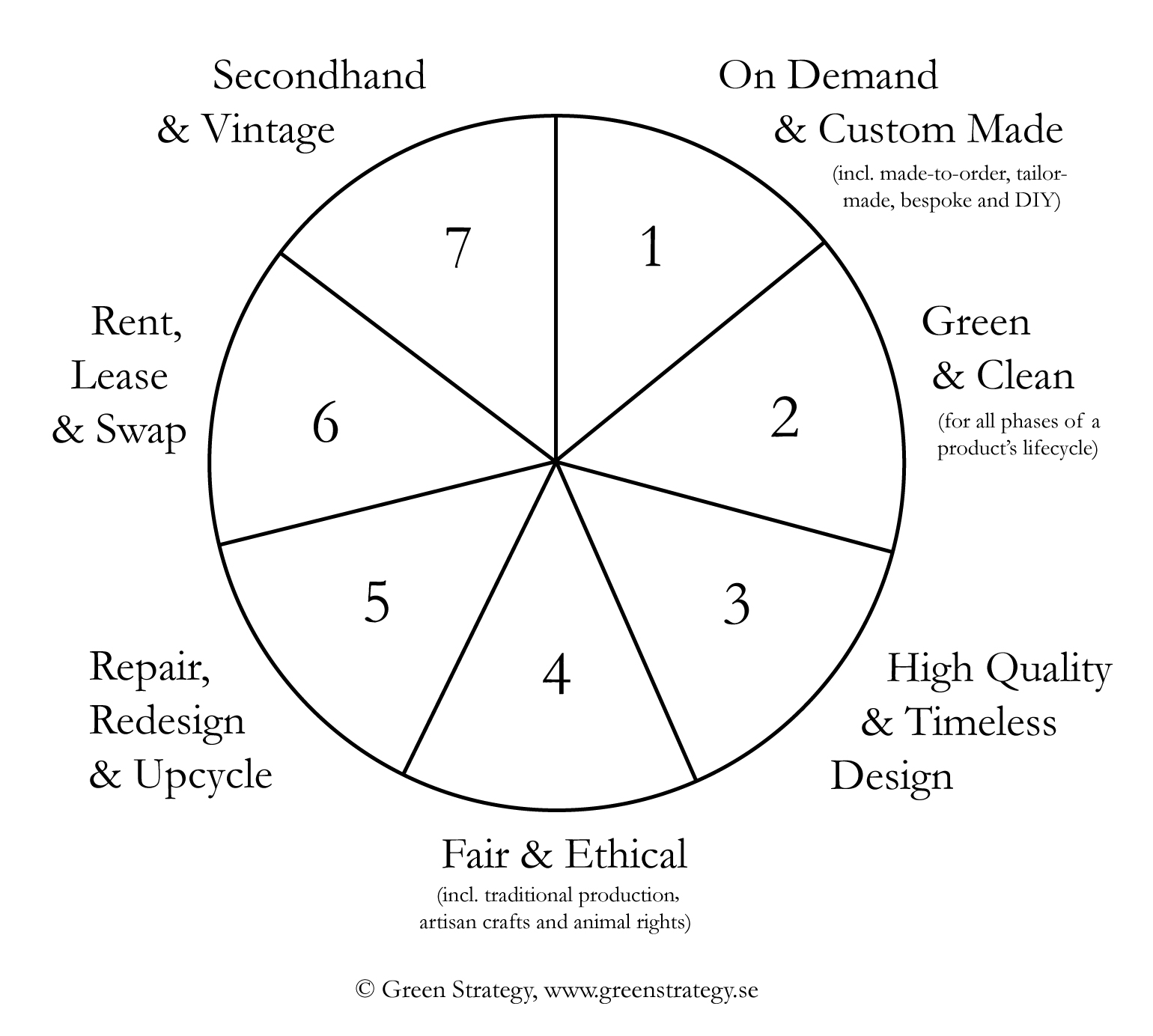The Potential Future of Cape Town Sustainable Fashion in the Global Market
The Potential Future of Cape Town Sustainable Fashion in the Global Market
Blog Article
Keep Ahead of the Contour by Exploring Ingenious Fashion Fads
In a market as vibrant as style, staying in advance involves greater than just following present patterns-- it demands an expedition of technology. Smart fabrics, for instance, are changing garments into practical work of arts, while 3D printing is revolutionizing layout processes with its adjustable, waste-reducing capabilities. As sustainability becomes a foundation, developments like eco-friendly materials and round style methods are reshaping ecological obligation - Cape Town Sustainable Fashion. In addition, the merging of technology and style proclaims a brand-new age of consumer engagement. Exactly how, then, can these arising patterns redefine the future of fashion, and what implications do they hold for brand names looking for to grow in this progressing landscape?

Accepting Smart Textiles
Over the last few years, the fashion market has observed a transformative shift with the assimilation of wise fabrics, a cutting-edge advancement that blends innovation with material. This advancement stands for not just a fusion of looks and performance yet also a considerable jump in the direction of sustainability and customization in vogue. Smart textiles, also called e-textiles, installed sophisticated electronic devices such as sensors and conductive threads within the textile, enabling garments to communicate with the user or the environment.
These textiles are developed to monitor physiological criteria, such as heart price or body temperature, giving real-time health analytics. Beyond health and wellness applications, wise fabrics are also being made use of for adaptive clothing, which can change color or pattern in response to environmental stimuli, therefore providing a vibrant fashion experience.
Additionally, the development of energy-harvesting fabrics that create power from motion or sunlight is leading the method for self-sufficient wearable innovation. This technology is interesting eco mindful customers and developers aiming to lower the environmental impact of style. As r & d in this area advancement, smart textiles are anticipated to become increasingly widespread, reshaping the landscape of modern-day fashion with their multifunctional abilities.
The Increase of 3D Printing
Reinventing the production landscape, 3D printing has actually emerged as a game-changer in the apparel industry. This innovative technology has actually enabled designers to press the boundaries of imagination, producing intricate and personalized garments that were previously unbelievable. By leveraging electronic design and additive manufacturing, 3D printing assists in the development of intricate geometries and patterns, enabling designers to explore new structures and structures.
A remarkable benefit of 3D printing in fashion is its capacity to create on-demand, minimizing waste and minimizing stock needs. This effectiveness not just maximizes production procedures however also permits fast prototyping, allowing designers to bring their visions to life in a shorter duration. In addition, 3D printing supports customization somewhat unmatched by traditional methods, providing distinct styles and personalized fits tailored to individual customer preferences.
The increase of 3D printing has also equalized style, making it accessible to arising designers that can currently produce high-grade pieces without substantial financial investment in typical manufacturing framework. As modern technology remains to advancement, the fashion business is poised to harness the full capacity of 3D printing, exploring new products and strategies that will undoubtedly redefine how style is developed and generated.
Sustainable Fashion Technologies
As the garment industry comes to grips with journalism demand for ecological duty, lasting style advancements have actually arised at the forefront of transformative change. The expanding understanding of environmental influence has actually fueled a shift in the direction of more eco-conscious methods and materials. Developers and brands are currently focusing on sustainability, incorporating techniques that decrease waste and decrease carbon footprints.
One substantial growth is the rise of round style, which stresses recycling and upcycling to extend the lifecycle of garments. This approach not only decreases waste yet additionally urges customers to take on an extra conscious strategy to clothing consumption. Additionally, using sustainable materials, such as organic cotton, hemp, and recycled polyester, has actually acquired grip. These products require less water and energy throughout manufacturing, dramatically minimizing environmental influence.
Another breakthrough hinges on the fostering of innovative dyeing methods that make use of waterless procedures or all-natural dyes, thereby lowering the vast quantities of water and chemicals typically made use of in fabric dyeing. Additionally, developments in biotechnology have resulted in the production of lab-grown natural leather and textiles, offering cruelty-free and environmentally pleasant choices to standard products. Through these pioneering initiatives, the style industry is making meaningful strides towards an extra lasting future.

Tech-Integrated Clothing
Tech-integrated apparel stands for an innovative fusion of style and technology, improving exactly how people connect with their clothing. This ingenious domain name is noted by the inclusion of smart fabrics and embedded digital components, boosting both functionality and aesthetic charm. From physical fitness trackers installed in sports apparel to warmed jackets regulated by means of smartphone apps, tech-integrated garments supplies customers unmatched benefit and adaptability.
Introducing brands are driving this trend, concentrating on creating garments that react to ecological stimulations or customer commands. For instance, some garments can alter shade or pattern in action to temperature changes, while others incorporate biometric sensors to keep an eye on health metrics like heart rate or stress and anxiety degrees. The seamless integration of modern technology into textiles likewise includes environmental sustainability, with initiatives to create self-cleaning materials or garments that adapt to weather problems, thus minimizing the need for multiple layers.
In addition, the arrival of wearable innovation is not simply restricted to garments yet reaches devices like watches and eyewear, additional widening the range of tech-integrated style. As the industry continues to innovate, the possibility for customization and customization in apparel expands, using consumers unique, tech-enhanced style experiences that provide to their individual demands and choices.
Future of Virtual Style
In recent times, the future of online style has actually become a transformative pressure within the market, leveraging innovations in digital innovation to redefine how fashion is developed, experienced, and eaten. By integrating augmented fact (AR), digital truth (VR), and 3D layout devices, Learn More developers can currently craft interactive and immersive experiences that transcend conventional style borders. Virtual style enables for the production of garments that exist only in digital environments, providing endless opportunities for development without the constraints of physical production.
This electronic change not just provides possibilities for innovative expression yet also addresses sustainability issues inherent in traditional style methods. Cape Town Sustainable Fashion. By getting rid of the need for physical resources, online fashion lowers waste and decreases carbon impacts. Moreover, the surge of digital fashion aligns with the increasing consumer need for one-of-a-kind and personalized experiences, as virtual garments can be customized and customized to individual choices effortlessly

Conclusion
The apparel industry's future hinge on the combination of sustainable techniques and innovative innovations - Cape Town Sustainable Fashion. Smart fabrics and tech-integrated garments official site are improving performance, while 3D printing uses opportunities for personalization and waste reduction. Sustainable style, through circular techniques and environmentally friendly materials, demonstrates a commitment to ecological stewardship. Furthermore, online style is poised to redefine customer interactions. Adjusting to these patterns is essential for brand names seeking to remain competitive and pertinent in this rapidly developing landscape.
In recent years, the style market has observed a transformative change with the integration of clever fabrics, an advanced advancement that mixes technology with material.As the fashion industry grapples with the pressing requirement for environmental obligation, sustainable style click here for info developments have emerged at the leading edge of transformative modification.In current years, the future of virtual fashion has actually emerged as a transformative force within the sector, leveraging developments in digital innovation to redefine how style is created, experienced, and taken in. The rise of virtual fashion aligns with the enhancing consumer demand for customized and special experiences, as digital garments can be personalized and customized to private preferences with simplicity.
The fashion market's future lies in the combination of ingenious modern technologies and sustainable practices.
Report this page